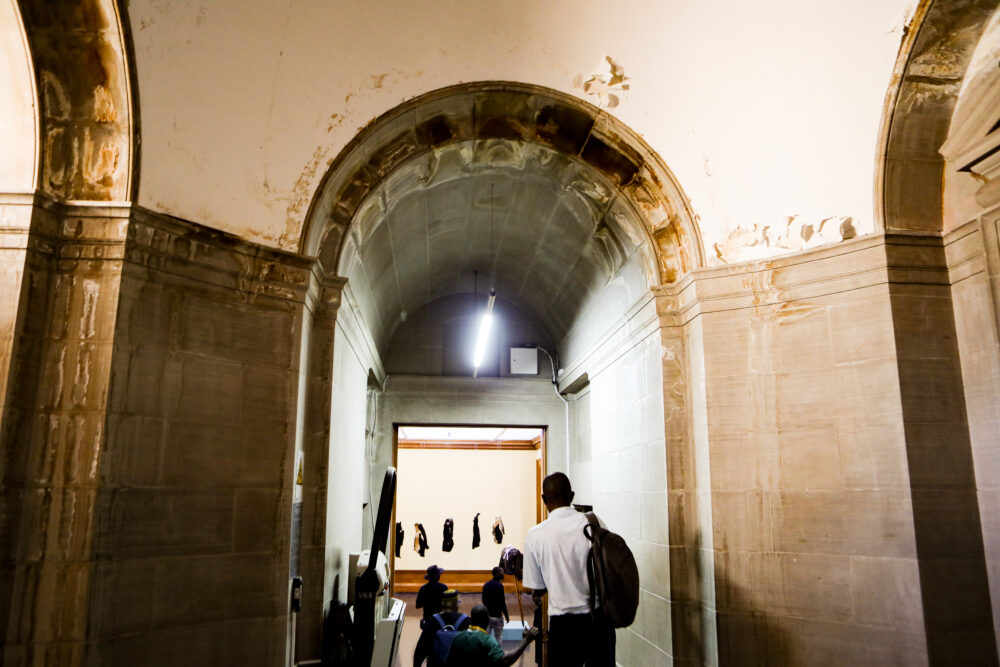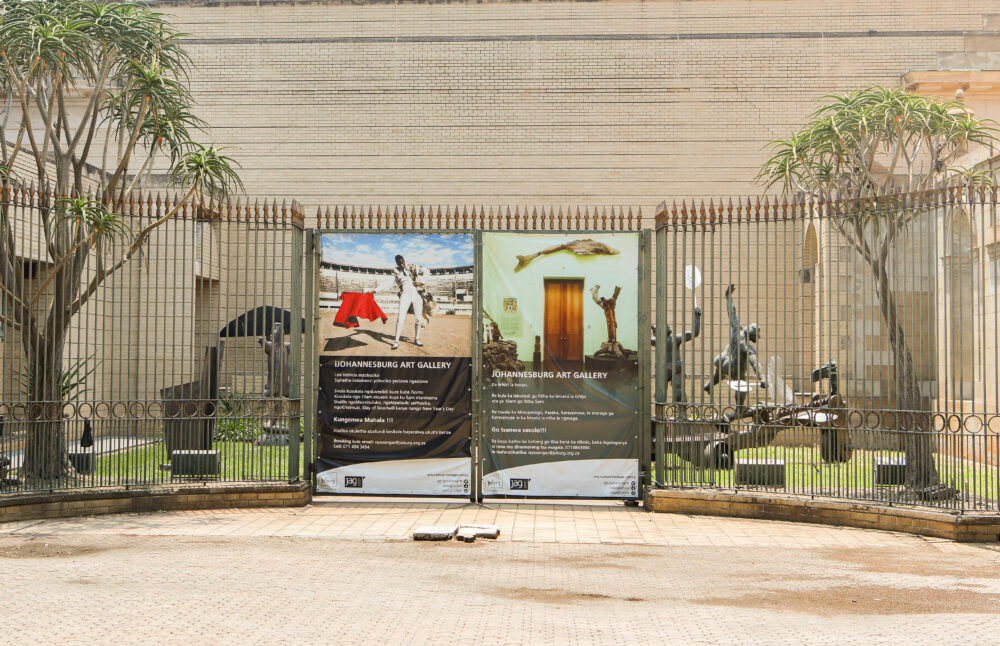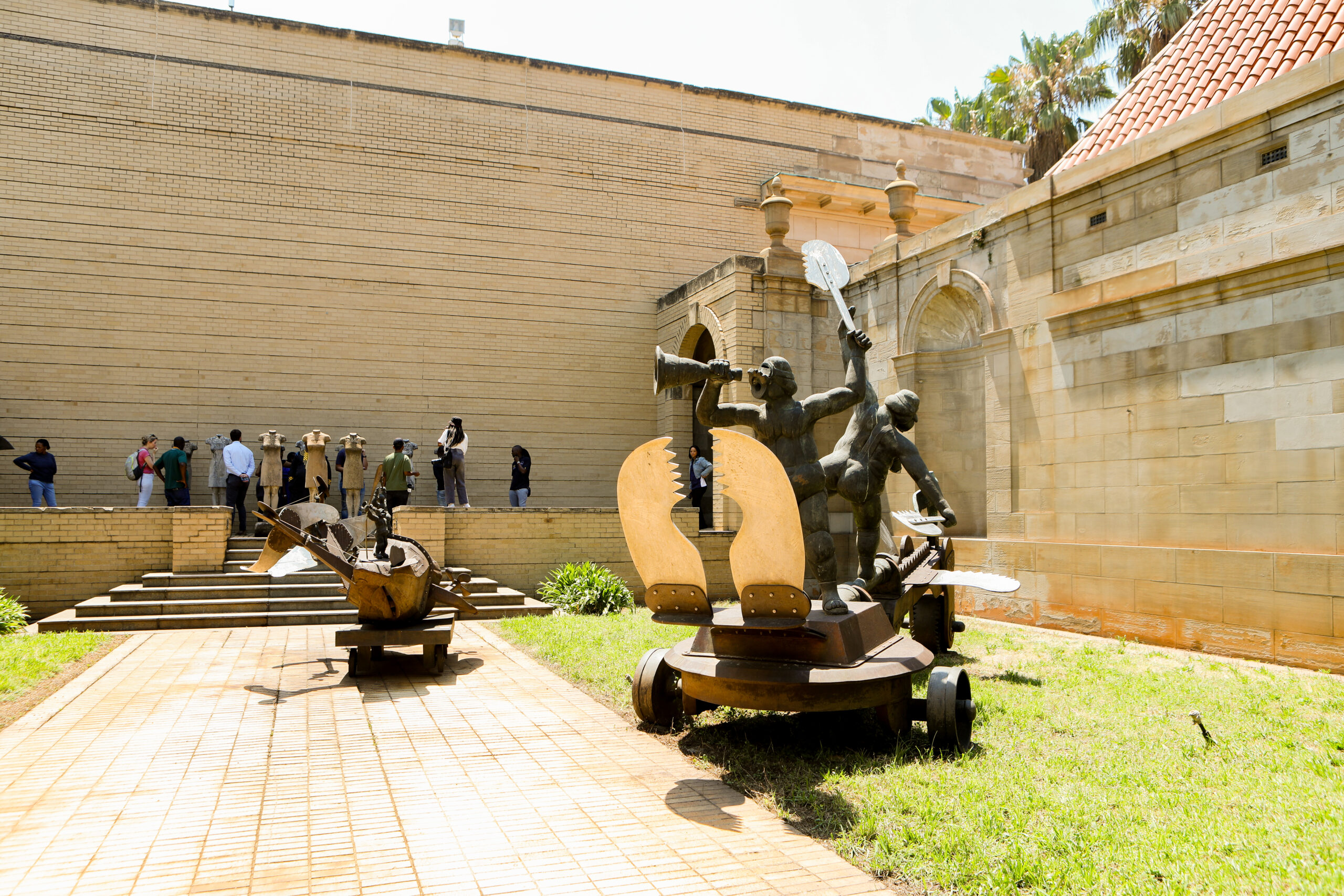Hanging in the balance: Years of neglect and mismanagement have led to the decay of the Johannesburg Art Gallery building in Joubert Park, threatening its priceless collection. (Photo by Gallo Images/Fani Mahuntsi)
Earlier this year, the Mail & Guardian carried a story saying that the neglect of the Johannesburg Art Gallery (JAG) reflected widespread public and media sentiment that it, once a cultural jewel, had become an embarrassing symbol of institutional failure amid a flourishing creative economy.
Then, days ago, on April Fool’s Day no less, Currency published an article headlined: “‘The war has started’ — Gayton McKenzie.” It reads like political theatre, casting the minister of sport, arts and culture as a crusader for the ruined gallery’s restoration, fighting a slow, bureaucratic system, with Vuyisile Mshudulu, the city’s director of arts, culture and heritage, framed as a villain.
On 27 March, a “JAG stakeholder engagement” meeting was held with artists, heritage organisations, and civic bodies. The Johannesburg Development Agency (JDA) presented its plan, led by Riaan Hollenbach of Lamela Consulting, in what felt more like a public perception management exercise than genuine consultation. The JDA will oversee the execution of urban development projects, including logistics, compliance and resources, and Lamela has reportedly been tasked with initiating renovations. The patchwork plan to revive the deteriorating gallery in crime-ridden Joubert Park included a temporary relocation of the JAG collection to Ditsong, the Standard Bank and Absa buildings, or Newtown, amid ongoing wrangling.
The timeline for this seems as wobbly as the building itself, with regulatory approvals and site preparation set for September, followed by infrastructure upgrades, and an operational launch in November next year.
The Johannesburg Development Agency detailed its planned process for relocating JAG’s important collection and restoring the historic Joubert Park precinct. It outlined the roles of national and provincial bodies and its own team of heritage experts who are tasked with balancing preservation and innovation.
But achieving this balance is apparently easier said than done.
A century-old institution, JAG is facing an existential crisis. Protected under the National Heritage Act, and home to a priceless collection, it is a national treasure and cultural pillar — central to the city’s artistic identity — yet also under constant threat from theft, neglect and decay, due to ongoing mismanagement.
Many institutions, including Friends of JAG and the Johannesburg Heritage Foundation, consider themselves stakeholders in its fate. But while parts of the proposed future seem promising, it is precisely because of the long-standing failures that the gallery’s troubled past can’t simply be brushed aside.
One afternoon, as Khwezi Gule, JAG’s curator, drove me around the surrounding precinct, he shared his thoughts on the interconnectedness of the gallery’s history with the city’s ongoing struggles.
“The weight of history is a burden I carry every day when I step into these spaces,” Gule revealed, visibly wounded by his own words.
“How do you reconcile with these objects — some deeply offensive — and yet, I’m the one tasked with their care and preservation?” he pondered.
This, for Gule, isn’t just a job, it’s a daily negotiation with history.
For him, the challenge for institutions like JAG lies in undoing centuries of oppression embedded in both the architecture and the artifacts.
“To completely transform these spaces, to tear them down and rebuild them anew, is something people aren’t ready to entertain,” he explains.
As we drove on, ducking taxis and swerving to avoid jaywalkers, Gule’s frustration became palpable.

“These spaces were not made for us, and yet we are made to occupy them,” he said, pointing out the fundamental contradiction of working in spaces designed to exclude the very people who are tasked with reshaping them.
As we spoke, it became clear that the true decolonisation of these spaces cannot simply be about representation or inclusion. It requires a complete rethinking of how art is produced, consumed and interpreted.
Many of the works in JAG’s collection were acquired under colonial rule and they reflect a history of exploitation. “These objects come from a time of violence,” Gule reflects, “and yet, they remain with us.” For him, as curator, this presents a paradox: “How do you reconcile with that, when these objects continue to represent a violent history, yet you’re responsible for them?”
The dilemma of what to do with them is tangled up in the broader conversation on reparations, because this isn’t just about restoring buildings or returning looted treasures, it’s about confronting the economic and social injustices that still stem from colonial violence.
Step outside JAG, and you’re hit with the raw, unvarnished reality of Johannesburg. Joubert Park, once a space for privileged white people, is a broken, neglected corner of the city.
It was never meant for black people, but after decades of disinvestment, it’s a shadow of what it could have been — a stark reminder of the failures of urban planning and justice.
The city’s plans for JAG’s restoration might raise questions but the vision is clear — rejuvenation, not just for the building, but for the surrounding area too.
“This is an opportunity to redefine what it means to have a truly public cultural institution in Johannesburg,” said Lamela Consulting’s Hollenbach, who was not afraid to admit the renovation team was working on gentrification.
As Gule warned, the true test will lie in whether these changes uplift local communities or simply maintain the status quo.
The restoration is an arduous and complex project that, despite the challenges, including frustrations over mismanagement and the slow progress, has managed to hold the public’s interest and a mood of cautious optimism.
This is why it would have been great if there had been more transparency and inclusivity in the consultation process. As one participant at the meeting stated, “We want a gallery that doesn’t just exist but thrives — and that can only happen if everyone who lives and works in this city is genuinely part of its future.”
Throughout the meeting, participants kept stressing the need for a radical rethinking, not only of the gallery’s physical structure but the value of its precious collection and its function within broader society.
“Each of these must be temporarily separated and reimagined independently before they can be brought together to serve future generations,” one speaker emphasised.
As Gule had similarly noted in our conversation days prior, “We are not just curators of art; we are curators of histories, legacies and futures.”

Despite a rather impressive presentation, questions about the project’s inclusivity, particularly regarding the involvement of younger artists in the process, were not fully addressed. The lack of younger voices at the meeting was palpable, with many of the attendees established figures in the arts.
A more transgenerational and transdisciplinary dialogue might be key to ensuring the success of the project, with one stakeholder remarking, “We need to make sure we don’t push out the very community we are trying to build this gallery for.”
Digital innovation, from a new archive to hybrid programming, was pitched as a way to extend JAG’s reach beyond its physical walls.
While that felt timely, some ideas — like promoting gentrification — missed the mark. Even when the “African Phoenix” idea emerged, it lacked the self-awareness that, to rise from the ashes, it first has to burn.
This is the weight of the work at hand. JAG’s future, rooted in South Africa’s history of urban erasure and systemic inequalities, lies at the intersection of reclamation and the persistent harshness of the present.
In Gule’s words, “Decolonisation isn’t about undoing history, it’s about constructing something that truly reflects and serves the people who’ve always been left behind.”
JAG’s restoration is about more than just reviving a colonial building. It’s about manifesting a vision for a future where African cultural production is reshaped to serve those whose voices have been silenced for too long.
The test is whether the leadership can transform lofty promises into something tangible or if it will remain another hollow hallucination.
Crédito: Link de origem


